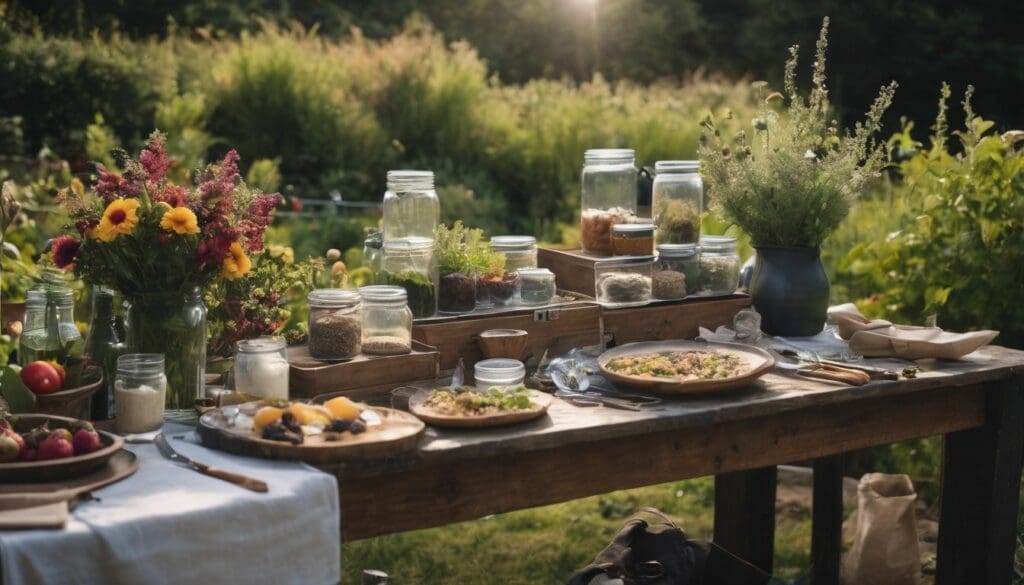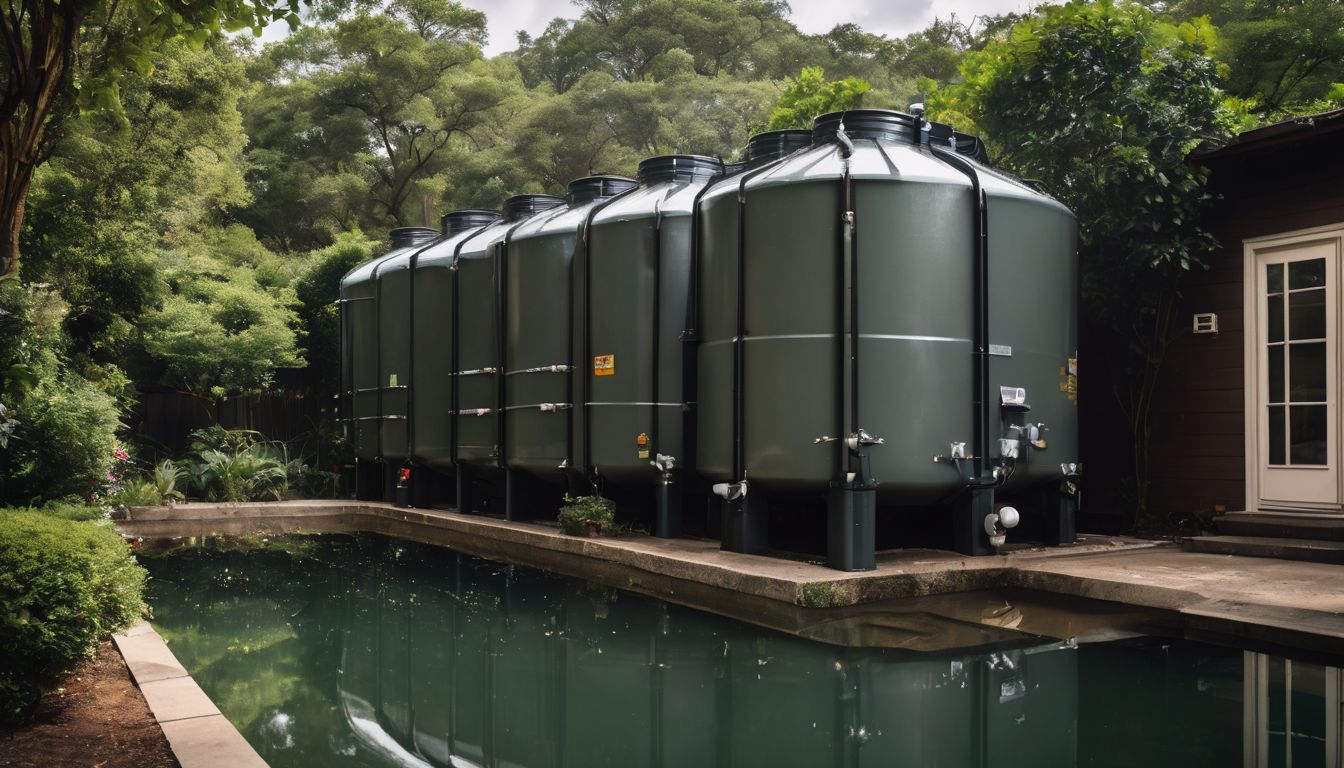Tired of clutter at home and looking for a smart solution? Community swaps are growing in popularity, offering an eco-friendly alternative to traditional buying and selling. This article guides you through organising your own swap meet, bringing neighbours together to exchange goods without money changing hands.
Get ready to declutter and discover treasures!
Key Takeaways
- Community swaps offer a way to declutter homes by exchanging items like clothing, books, and tools without money.
- Swaps cut down waste by giving secondhand goods new life and encouraging sustainable living among neighbours.
- Planning a swap involves picking the right items to trade, setting a convenient time and place, and inviting people interested in eco-friendly practices.
- Establish clear rules for exchanging items at the swap meet and ensure arrangements are made for leftover goods, which can be donated or recycled.
- Alternatives for those not interested in bartering include “Buy Nothing Day” events or joining local sharing networks to borrow needed items.
The Benefits of Swapping Instead of Selling
Moving beyond the basics, swapping instead of selling offers a treasure trove of positives for your community and the environment. Engaging in item sharing through a neighbourhood swap cuts down on waste, as pre-loved items find new life rather than ending up in landfills.
This embrace of secondhand goods bolsters a sustainable exchange that both benefits the planet by reducing production demands and fosters a shared economy among locals.
Bartering also strengthens social ties within the community barter network, creating opportunities for collaborative consumption initiatives that encourage people to connect and support each other.
Choosing to organise local swap events over traditional selling can save you money too—not only do you acquire items without spending cash but avoiding transaction fees ensures more value is retained amongst participants.
Plus, this approach aligns perfectly with environmentally conscious values by minimising environmental footprints—one swap at a time.
How to Plan a Successful Community Swap
When planning a community swap, consider choosing the right items to swap, setting a date, time and location that works for everyone, and inviting the right people to participate. These key factors can contribute to a successful and enjoyable event for all involved.
Choosing the right items to swap
When choosing items to swap, consider the quality and condition of the goods. Look for items that are gently used or in good working order. Think about what you have that others might find valuable and be open to a variety of items such as clothing, books, kitchenware, toys, and tools.
Assess your community’s needs and focus on items that can be reused or repurposed. Consider sustainable choices such as organic produce from local gardens or homemade crafts.
Avoid bringing any broken or damaged items to the swap event. Ensure that the products are clean, well-maintained, and ready for immediate use by someone else in your community. Remember to think about durability and longevity when selecting goods for swapping; seek out items with lasting value rather than disposable products.
Setting a date, time, and location
- Choose a date that works for the majority, considering weekends or evenings for convenience.
- Decide on a suitable location, such as a local community centre, park, or even someone’s spacious back garden.
- Consider the time of day when most participants are likely to be available, such as mid – morning or early afternoon.
- Ensure the chosen date doesn’t clash with any major local events to maximise attendance.
- If possible, set up a rain date in case of unfavourable weather conditions; this will show flexibility and good planning.
Inviting the right people
To ensure a successful community swap, it’s important to invite the right people. Reach out to neighbours, friends, and local groups who share an interest in sustainable living and community trading.
Spread the word through social media, local notice boards, and community newsletters to attract individuals passionate about reducing waste and supporting local exchange initiatives.
Identifying potential participants who align with the values of environmental conservation can help create a vibrant swapping environment where everyone is committed to contributing positively towards a more sustainable future for the community.
Rules and Guidelines for a Successful Swap
Ensure that all items brought are in good, usable condition and set clear guidelines for how the exchange will be arranged – read on to discover more tips for a successful community swap event!
How to arrange the exchange
When planning the exchange, designate a specific area for each participant to display their items. Label these stations clearly to avoid confusion and make it easy for attendees to browse through the offerings at their leisure.
Once everyone has arrived and set up their items, establish a clear system for trading, such as using tokens or a simple bartering process where individuals can negotiate directly with each other.
Encourage participants to engage in friendly communication when making exchanges, fostering a sense of community and collaboration.
After the exchange is complete, ensure that all participants are aware of what to do with any leftover items. This could include donating them to local charities or arranging for communal disposal if necessary.
What to do with leftover items
After the community swap, consider donating any remaining items to local charities or charity shops. This ensures that unwanted items find new homes and benefit those in need within the community.
Another option is to organise a follow-up event where participants can bring their leftover items and trade with others who may have missed the initial swap.
Encouraging a culture of reuse and recycling within the community helps reduce waste and fosters a sense of environmental responsibility among its members. Emphasising sustainability through these actions supports conservation efforts while promoting a sense of unity and cooperation in cultivating an eco-friendly neighbourhood.
Post-swap cleanup
After the swap, ensure all participants clean up their designated areas. Dispose of any remaining items responsibly. Recycle as much as possible and donate usable goods to local charities or shelters.
Complete the final sweep of the area to leave it spotless for the next community gathering or event.
Remember to properly dispose of any waste generated during the swap and encourage others to do so too. Coordinate with local waste management services for proper disposal options. Clean up ensures a positive experience for everyone involved in the community exchange program while supporting sustainability efforts.
Alternative Options for Non-Barterers
Consider hosting a “Buy Nothing Day” event for those who prefer not to barter. This event encourages people to give away items they no longer need, reducing waste and promoting sustainability.
Another option is joining a local sharing network where individuals can loan or borrow items from others in the community, fostering a culture of resourcefulness and reducing unnecessary consumption.
These alternative options provide avenues for non-barterers to participate in sustainable community exchange without directly engaging in trading activities. Encouraging participation in these initiatives can contribute to building a more environmentally conscious and supportive neighborhood environment.
Next, let’s delve into the ways technology can enhance community exchanges with Local Goods Exchange Platforms.
Conclusion
In conclusion, a community swap or barter system can bring people together and encourage sustainability. Hosting an event allows individuals to trade items they no longer need, reducing waste and promoting reuse.
By organising a swap, you can contribute to building a more environmentally conscious and supportive community that values resourcefulness. Participating in local sharing events helps reduce consumption and fosters connections among neighbours, creating a positive impact on the environment.
FAQs
1. What is a community swap or barter system?
A community swap or barter system is where local people come together to trade items and services without money changing hands, creating a neighborhood swapping network.
2. How do you organise a local swap and trade event?
To organise a local swap and trade event, gather interested individuals from your community, decide on rules for trading, find a suitable location, and promote the event for maximum participation.
3. Can anyone start a barter marketplace in their neighborhood?
Yes! Any motivated person can start a barter marketplace by gathering neighbours who want to exchange goods and services directly within the community.
4. What are the benefits of participating in community sharing events?
Participating in community sharing events helps save money, reduces waste, builds stronger neighbourhood connections and provides access to various items and skills through direct exchange.





